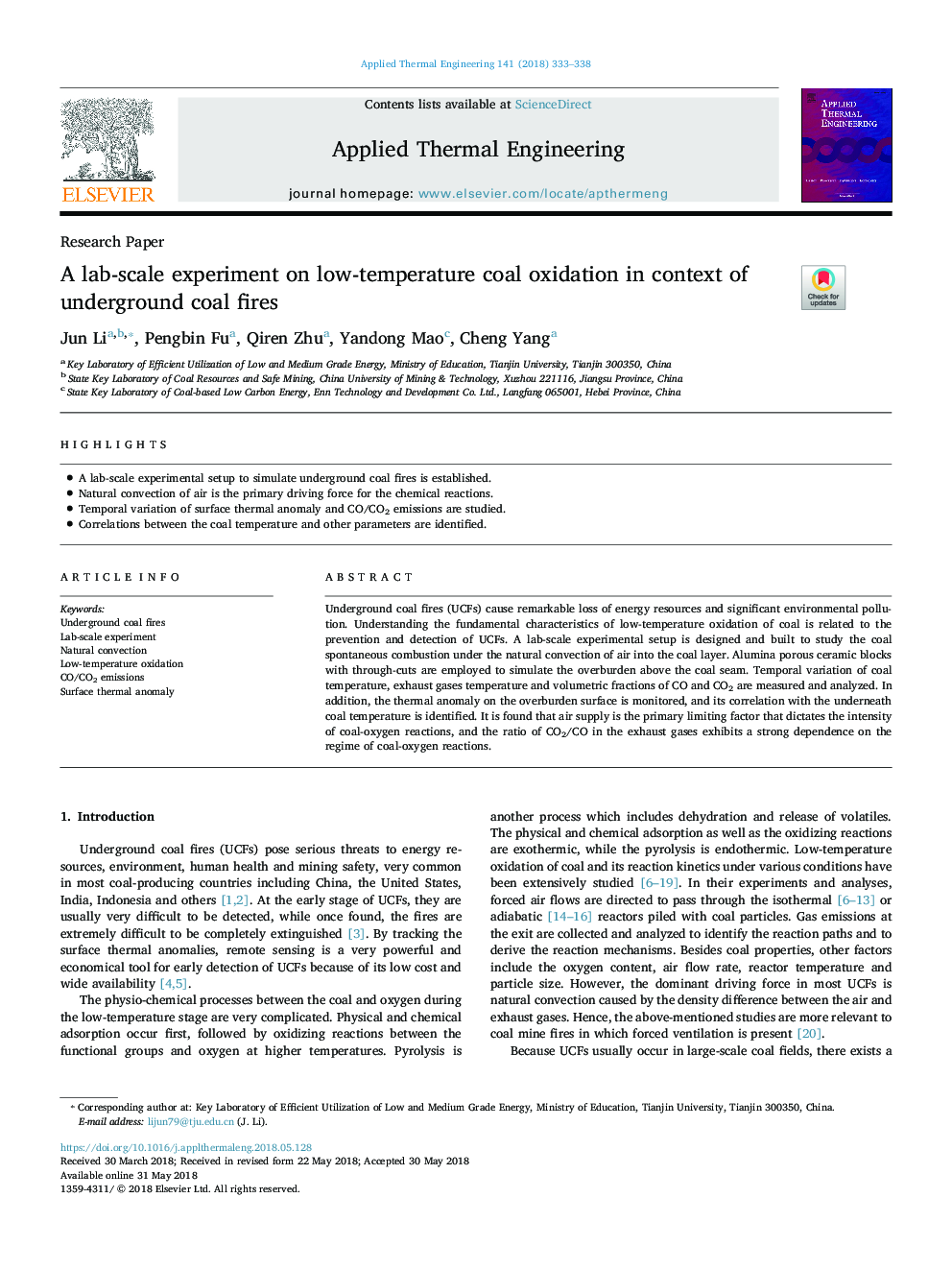| Article ID | Journal | Published Year | Pages | File Type |
|---|---|---|---|---|
| 7044937 | Applied Thermal Engineering | 2018 | 6 Pages |
Abstract
Underground coal fires (UCFs) cause remarkable loss of energy resources and significant environmental pollution. Understanding the fundamental characteristics of low-temperature oxidation of coal is related to the prevention and detection of UCFs. A lab-scale experimental setup is designed and built to study the coal spontaneous combustion under the natural convection of air into the coal layer. Alumina porous ceramic blocks with through-cuts are employed to simulate the overburden above the coal seam. Temporal variation of coal temperature, exhaust gases temperature and volumetric fractions of CO and CO2 are measured and analyzed. In addition, the thermal anomaly on the overburden surface is monitored, and its correlation with the underneath coal temperature is identified. It is found that air supply is the primary limiting factor that dictates the intensity of coal-oxygen reactions, and the ratio of CO2/CO in the exhaust gases exhibits a strong dependence on the regime of coal-oxygen reactions.
Related Topics
Physical Sciences and Engineering
Chemical Engineering
Fluid Flow and Transfer Processes
Authors
Jun Li, Pengbin Fu, Qiren Zhu, Yandong Mao, Cheng Yang,
